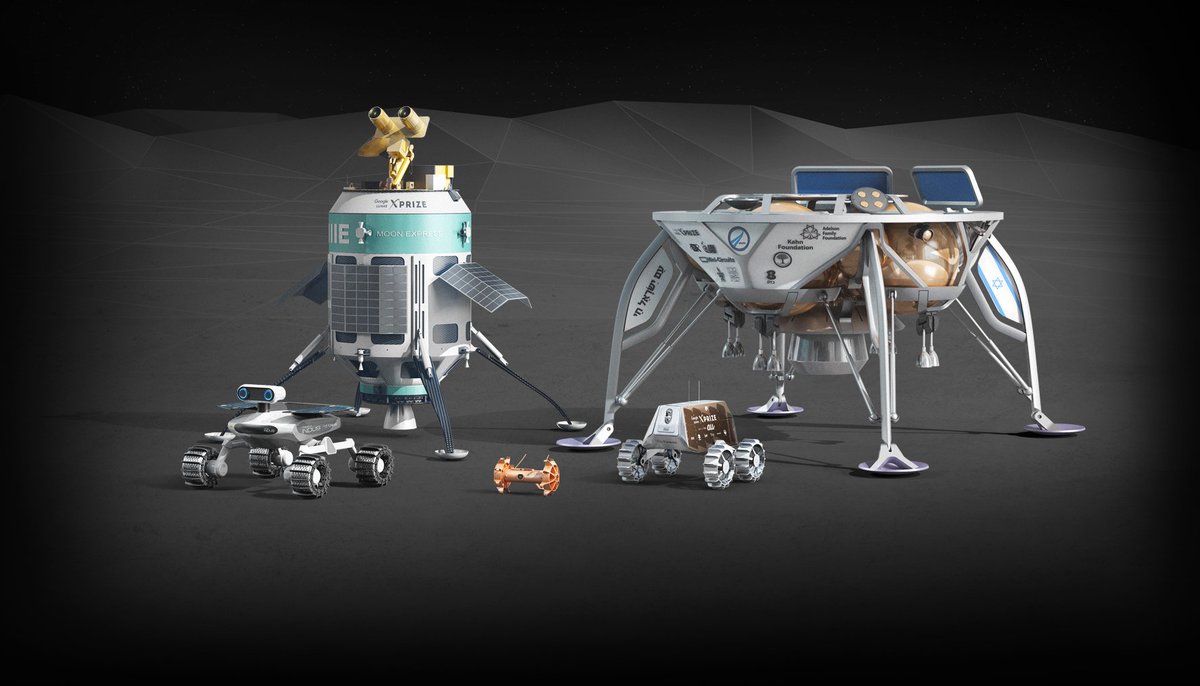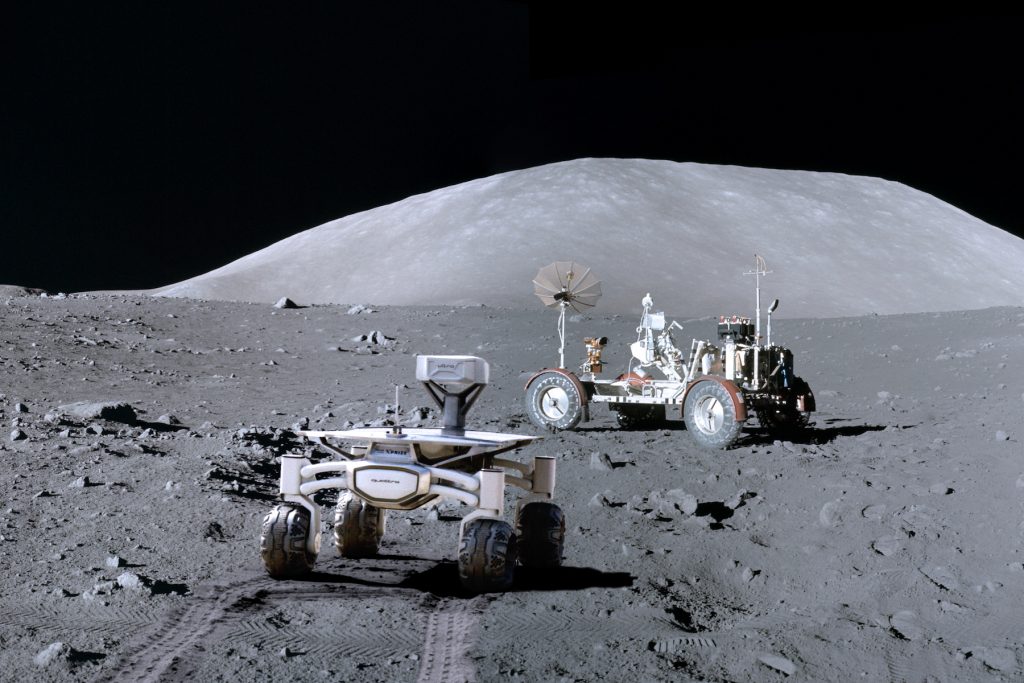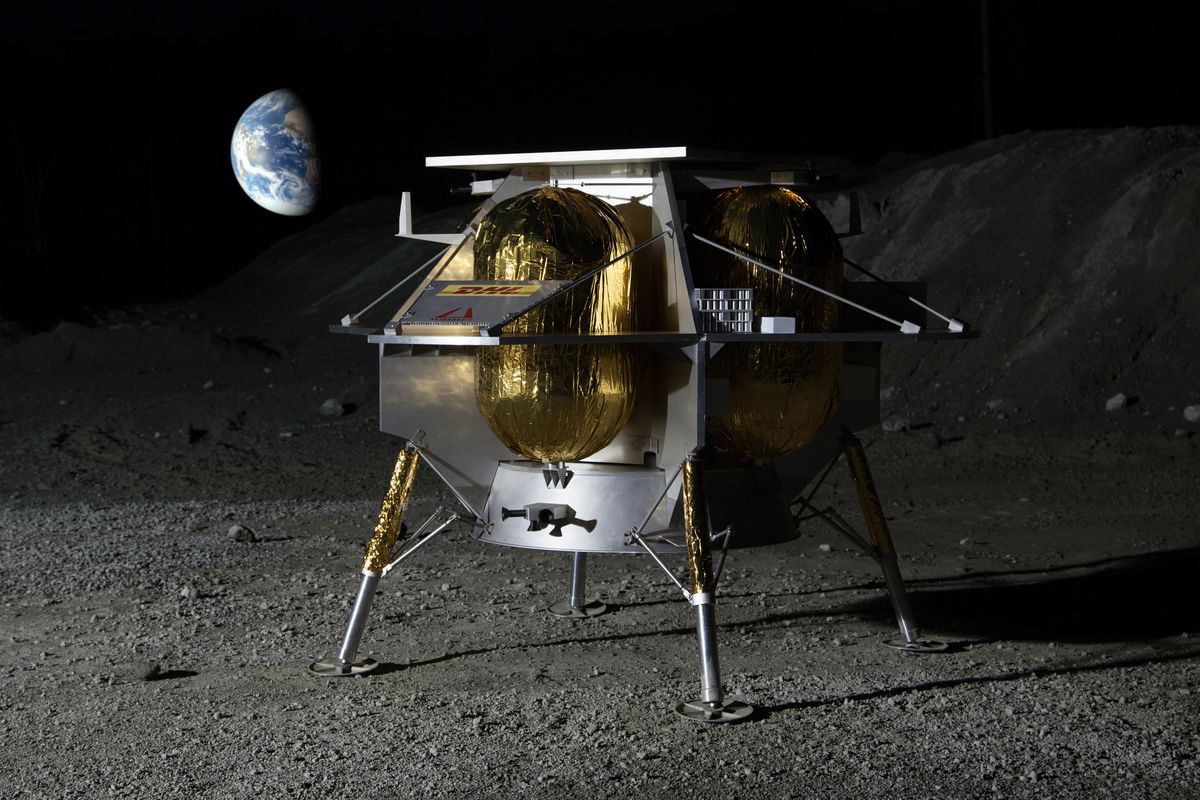Google Lunar Xprize finalists at the finish line

Until the end of the Google Lunar Xprize contest, which started 10 years ago, there are 4 months left and there will be no more renewals. So far, none of the five finalists have a confident start date. Two teams are urgently looking for money to complete and launch their products.
Google Lunar X Prize - a premium of $ 30 million, established by the X Prize Foundation and Google in 2007. The main prize of $ 20 million will be received by the team that first made a soft landing on the moon, having traveled at least 500 meters and transmitted high-resolution photos and video to the earth.
At the beginning of 2017, five contest finalists were announced :
| Team | A country | Device type | Rocket | Financing |
|---|---|---|---|---|
| Moon express | USA | Lander | Electron | 100% |
| Synergy moon | Int. | Rover | Neptune N-8 | not known |
| Hakuto | Japan | Rover | PSLV | 100% |
| Team intus | India | Rover & lander | PSLV | not enough $ 35 million |
| Spaceil | Israel | Lander | Falcon 9 | not enough $ 20 million |
In August 2017, the end date of the competition was finally moved to March 31, 2018. New intermediate targets were also added - $ 1.75 million for going into orbit of the Moon and $ 3 million for a proven soft landing on the Moon.
Moon express
Moon Express is the first privately held company in the world to receive permission from the US government to land on the moon. Moon Express received $ 20 million dollars in January 2017, which should be enough for refinement and launch. The company's plans are ambitious and winning the competition is not the only goal. Planned delivery of lunar soil to earth, mining and colonization of the moon! But back to the competition. Moon Express immediately ordered 3 launches on the Electron rocket to Rocket Lab's for the end of 2017. But after Electron’s not quite successful launch this summer, Moon Express moved its launches to 2018. The next Electron test launch is scheduled for December 8, 2017.
The team has only a landing module, and it will fly over the moon.
Spaceil
Back in 2015, the Israeli team SpaceIL was the first to sign a contract for the delivery of the landing module to the moon. It was going to launch its landing module with additional load on the Falcon 9.
Unlike Moon Express, SpaceIL is a non-commercial organization, created for educational and scientific purposes. In case of victory, the prize fund is planned to be donated to technical education in Israeli schools. SpaceIL has already managed to raise $ 55 million, but money is scarce and on November 29, the Director of SpaceIL made a call for help: “We are at a crucial stage of the project. Assembly of the landing module will end in two weeks. But if we fail to collect the missing $ 20 million in the near future, the seven-year work of Israeli scientists will disappear! ”

As in the Moon Express, SpaceIL did not develop a rover and 500m distance will be overflights.
Hakuto
The Japanese team Hakuto has completed the development of its small lunar rover, weighing only 4 kg., And does not need additional funds. Hakuto is sponsored by 20 Japanese firms, and ispace inc., Which is going to mine minerals on the moon. The launch is scheduled for March 2018 on the Polar Satellite Launch Vehicle (PSLV) Indian rocket together with the Indian team Indus. After an unsuccessful launch in August 2017, the PSLV missile launch dates have shifted. The plans of the ISRO Indian space agency are aggravating the situation, launching its own lunar rover, Chandrayaan-2, in April 2018.
Team indus
Team Indus itself is in dire need of funds not only to launch, but also to bring the project to the stage of readiness. The Indian team lacks $ 35 million, which is half the total cost of the project. In a recent interview, representatives of the organization even talked about raising funds through crowdfunding.
Team Indus is developing not only the rover, but also its own landing module.

Synergy moon
The most mysterious finalist is the international Synergy Moon team, which incorporates the contestants: STELLAR, Independence-X, Omega Envoy and SpaceMETA. They are going to launch a Tesla Surveyor rover on a Neptune N-8 LUNA rocket, specially developed by Interorbital Systems Corporation. The rocket itself is not yet ready. There is no information about funding and launch dates.

Retired
The German team Part time scientist was late with the signing of a launch contract at the end of 2016, but does not refuse the plan of flights to the moon. Part time scientist want to deploy LTE communication on the Moon with the help of Vodafone. And the rover created with Audi will be sent to the Apollo 17 landing site. In 2018, the project will enter the final phase, and launch is planned for 2019.

American Astrobotic also does not abandon its plans to deliver commercial cargo to the moon. In 2014, the team won all XPrize interim prizes totaling $ 1.7 million and for a long time seemed to be the leader of the competition. Back in 2011, Astrobotic negotiated with SpaseX for the first flight to the moon. In the future, the team entered into numerous partnership agreements with various firms (for example, DHL) and agencies (including NASA and the German DLR), but the first flight was constantly shifting. In 2017, the first flight was postponed to 2019, and they are already planning to fly to Atlas V from ULA.

The success of the teams depends largely on the launches of the rockets on which they are going to reach the moon, and partly on the financing. Whether the teams will have time to land in 4 months - time will tell. It is important that the competition has already fulfilled its goal and has promoted the private astronautics closer to the moon.
All Articles